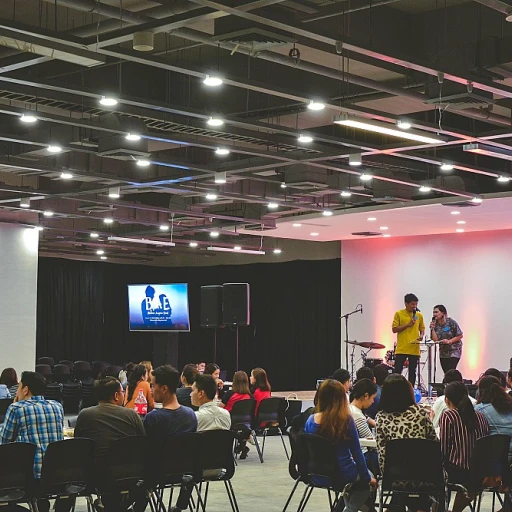
Defining Regrettable Attrition
Clarifying Regrettable Employee Attrition
In today's competitive job market, organizations are increasingly focusing on the concept of regrettable attrition. It's defined as the loss of valuable team members that management and the company would have preferred to retain. Unlike regular employee turnover, regrettable attrition specifically pertains to top talent leaving, creating a noticeable impact on the organization’s performance and employee retention strategies. Regretted attrition can be a significant concern for human resources and management teams who aim to cultivate a robust company culture and foster effective employee engagement. Efforts to understand this type of attrition often involve analyzing why employees leave, delving into their work experiences, workplace conditions, and overall employee satisfaction levels. Part of tackling regrettable attrition includes recognizing that not all attrition is unfavorable. For instance, unregretted attrition might involve the loss of employees whose departure does not harm the work environment or organizational goals. Conversely, when talented employees feel disenchanted with their work life or do not align with the company's culture, their exit could cost the company dearly. In an organization where career development and employee experience are prioritized, regrettable attrition rates should ideally be low. This calls for retention strategies that focus on improving job satisfaction, nurturing talent, and ensuring a balanced work life for all employees. Exploring initiatives like employee resource groups can be a vital aspect of these strategies, allowing for more inclusive and engaged workplaces. For further insights into these initiatives, consider exploring more on the rise of employee resource groups in tech companies.Current Trends in Employer Branding
Shifting the Paradigm: Evolution in Employer Branding
Employee attrition often becomes a concern when top talent leaves the organization, leading employers to rethink their branding strategies. Recent trends indicate a growing emphasis on leveraging technology to enhance organizational performance and attrition rates. Employers are increasingly diversifying their approaches in an attempt to align with employees' expectations. One profound trend is the integration of technology to improve employee experience and engagement. Companies are investing in software tools that foster easier communication, more effective management, and ultimately, a better workplace atmosphere. This shift not only aids in retaining top talent but also garners the interest of potential employees who value modernism and efficiency in their work life. Moreover, the role of company culture is gaining more traction than ever. Organizations are striving to build environments that prioritize work-life balance, career development, and meaningful engagement. When employees feel valued and part of a supportive work environment, they are less likely to be part of regrettable attrition, reducing overall employee turnover and boosting retention. As trends continue to evolve, a critical understanding is that a robust employer branding strategy can greatly impact employee retention. For companies aiming to tackle regrettable attrition, keeping abreast of these developments can make a difference in maintaining a thriving workforce. Employers need to stay informed about the latest trends and best practices in employer branding. For more insights on how technology is playing a transformative role in the workplace, explore further how technology enhances organizational performance.The Cost of Losing Top Talent
The Financial and Operational Consequences of Losing Top Performers
When top talent leaves an organization, the costs extend beyond financial metrics, affecting overall culture and engagement. Employee attrition, particularly regretted attrition, signifies potential gaps in management and employee satisfaction. Financial Costs: The immediate financial impact includes the costs associated with recruitment, hiring, and training. Organizations often underestimate the expense of lost productivity and the potential knowledge drain when experienced employees leave. These costs highlight the necessity for strategic management and retention of key employees. Operational Disruptions: The departure of top employees can cause significant disruptions across teams. Their absence may lead to reduced performance if the remaining team members lack the expertise or experience to fill the void effectively. This situation can also lead to higher stress levels, impacting the overall work environment and potentially increasing the attrition rate further. Impact on Company Culture: Regrettable attrition impacts the company culture, affecting how employees feel about their workplace. A high turnover rate can damage morale and weaken employee trust in management. It underscores the importance of nurturing a positive work culture and investing in employee engagement and retention strategies to retain top talent. For deeper insights into cultivating a vibrant company culture that appeals to employees and reduces regretted attrition, explore how innovative wellness activities can significantly boost workplace morale: boost workplace morale.Strategies to Reduce Regrettable Attrition
Effective Approaches for Minimizing Regrettable Attrition
Incorporating effective strategies to reduce regrettable attrition is critical for any organization looking to retain its top talent and improve its employment engagement. When employees exit unexpectedly, particularly those whose skills and talents are highly valued, it results in tangible costs and disruption. Therefore, tackling this concern with targeted retention strategies can truly make a difference. One of the key areas of focus should be fostering a strong company culture. The development of a positive work environment is essential in ensuring that employees feel valued and motivated. Human resources must prioritize creating an inclusive and engaging atmosphere that makes employees want to stay for the long haul. Emphasizing work life balance, career development, and a supportive work environment will naturally aid retention efforts. Moreover, enhancing employee engagement is vital. Engaged employees tend to have a stronger connection with their work, team, and organization overall. Management should work to cultivate opportunities for employees to develop meaningful relationships and feel an intrinsic alignment with the company's mission and values. Implementing robust performance management systems can also help to identify potential areas of concern before they lead to attrition. Regular feedback and performance reviews provide employees with clarity on their roles and growth paths and can significantly enhance their job satisfaction. Lastly, investing in employee development not only helps in reducing regretted attrition but also boosts employee performance. Offering tailored career development programs demonstrates that the organization values its workforce and is invested in their personal and professional growth. By integrating these strategies effectively, companies can reduce the rates of regrettable attrition, maintaining a stable workforce that contributes positively to both individual and organizational success.The Role of Employee Engagement
Fostering a Positive Environment
Employee engagement plays a crucial role in minimizing regrettable attrition. When employees feel connected to their work, team, and organization, they are more likely to remain committed and contribute positively to the company culture. Encouraging open communication and providing platforms for feedback can significantly enhance the employee experience, making individuals feel valued and heard within the workplace.
Promoting Professional Growth
Investing in career development opportunities can boost employee retention and diminish attrition rates. Providing access to training programs or workshops that align with an employee’s job role and future career aspirations can be a worthwhile investment. Not only does this develop skills, but it also positions the company as one that supports personal and professional growth, reducing regrettable attrition.
Maintaining Work-Life Balance
A healthy work-life balance is vital in retaining top talent. When employees feel overwhelmed due to poor work-life integration, they may consider leaving the organization, leading to both regrettable attrition and a high attrition rate. Offering flexible work options and encouraging breaks can create a more sustainable work environment, thereby enhancing employee engagement.
Creating a Stronger Company Culture
Company culture deeply impacts employee satisfaction and is a cornerstone of effective management strategies aimed at reducing regretted attrition. Cultivating a culture of inclusivity and collaboration can elevate employee morale and performance. When employees believe in the organization's mission and values, they are less inclined to leave, improving retention rates and decreasing overall employee turnover.
Evaluating Engagement Levels
Regularly assessing engagement through surveys and feedback sessions helps management identify areas needing improvement. This data-driven approach allows companies to tailor their employee engagement strategies more effectively, addressing the unique needs of their workforce and mitigating potential unregretted attrition.
Measuring Success in Employer Branding
Evaluating the Effectiveness of Your Employer Branding Efforts
Measuring success in employer branding is crucial for understanding how well your strategies are working to reduce regrettable attrition and improve employee retention. A comprehensive evaluation involves several key metrics and approaches that provide insights into the impact of your branding initiatives on employee turnover and engagement.
Key Metrics to Monitor
- Attrition Rates: Regularly track both regrettable and unregretted attrition rates. A decrease in regrettable attrition indicates that your efforts in retaining top talent are paying off.
- Employee Engagement Scores: Use surveys and feedback tools to gauge how engaged employees feel within the organization. High engagement often correlates with lower turnover.
- Retention Rates: Monitor the retention rates of your top performers. High retention of top talent suggests a strong employer brand and effective retention strategies.
- Employee Experience Feedback: Collect qualitative data through exit interviews and regular check-ins to understand why employees leave or stay. This feedback can highlight areas for improvement in your work environment and company culture.
Tools and Techniques
Leverage technology to enhance your measurement capabilities. Software solutions can provide valuable analytics and insights into employee performance and engagement levels. Consider integrating tools that offer real-time data and predictive analytics to anticipate potential attrition risks.
Continuous Improvement
Employer branding is not a one-time effort but an ongoing process. Regularly review your strategies and adjust them based on the data collected. Engage with your human resources team to ensure alignment with company goals and employee needs. By fostering a culture of continuous improvement, your organization can maintain a competitive edge in attracting and retaining top talent.













